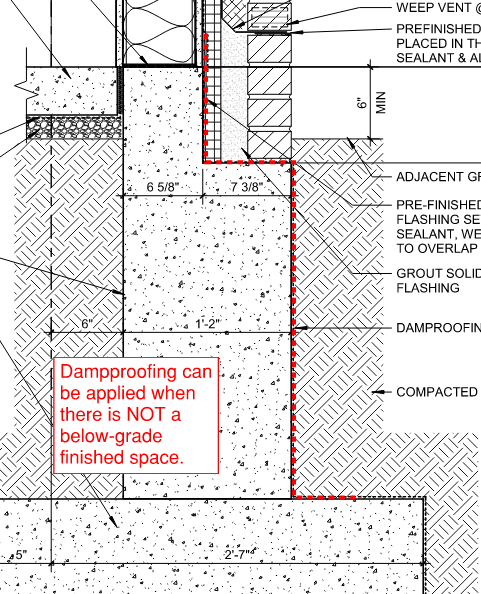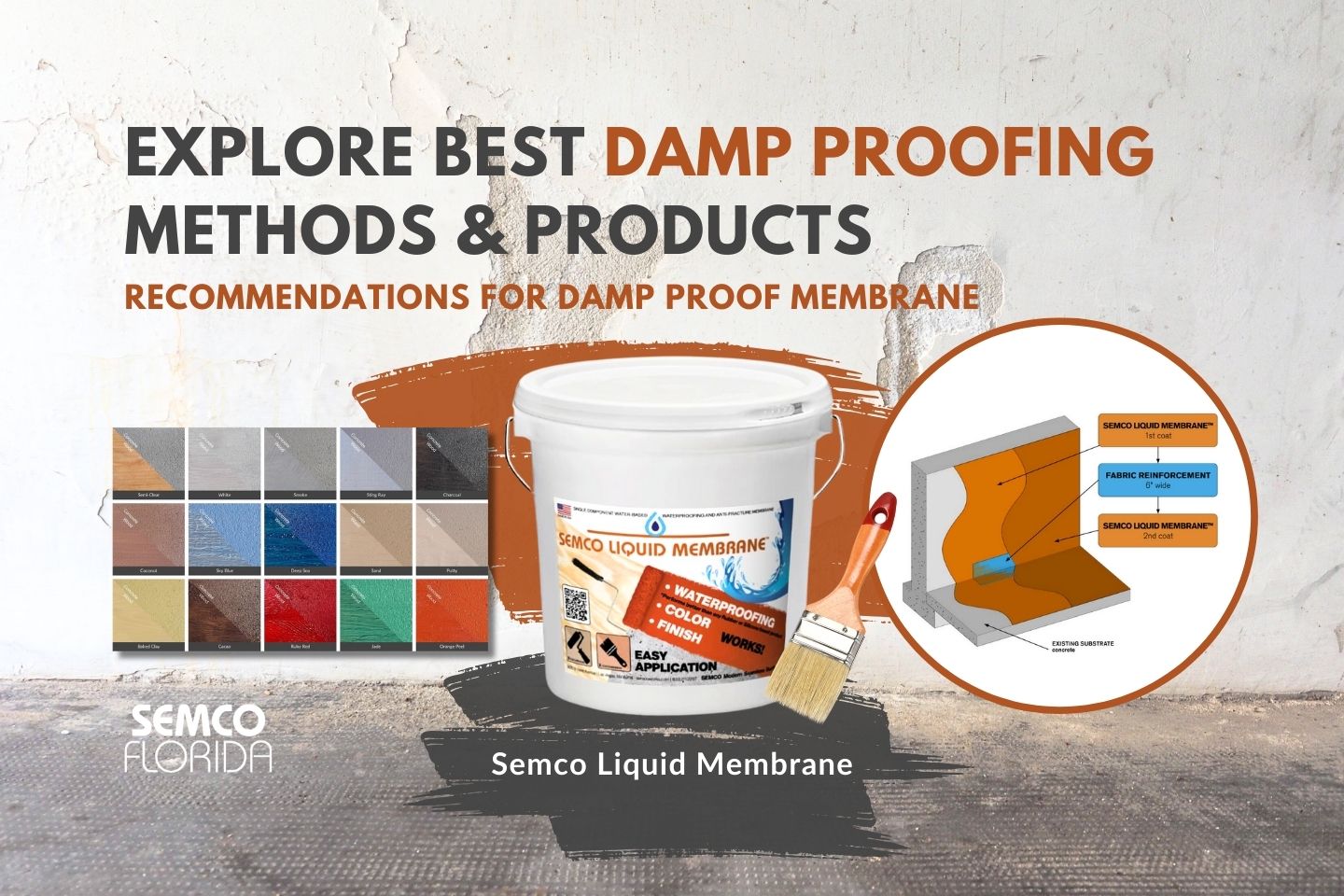What you gain from hiring a mould treatment newcastle professional
What you gain from hiring a mould treatment newcastle professional
Blog Article
Exploring the Different Methods and Solutions for Effective Damp Proofing
Wetness in structures poses considerable difficulties to both architectural integrity and indoor air quality. Different methods and options have actually arised to battle this pervasive problem. From standard damp-proof membrane layers to cutting-edge chemical therapies, each approach offers unique advantages. Recognizing these choices is necessary for effective moisture control. Picking the ideal remedy depends on details structure problems and requirements, triggering additional exploration right into the most reliable wet proofing strategies available.
Understanding the Causes of Wetness
Although dampness can develop from numerous resources, recognizing these reasons is crucial for efficient remediation. Typically, dampness stems from 3 key resources: increasing moist, penetrating damp, and condensation. Rising moist happens when groundwater takes a trip up-wards through porous materials, such as block or stone, usually because of a lack of a reliable barrier (mould treatment newcastle). Passing through moist is typically created by outside factors, consisting of roofing system leaks, malfunctioning rain gutters, or harmed walls, allowing water to penetrate a home. Condensation, on the various other hand, results from excess dampness in the air, commonly exacerbated by bad air flow and temperature level differences, causing water beads basing on surface areas. Identifying these underlying issues is necessary, as each kind of dampness needs a customized strategy for removal. Proper evaluation assists in establishing the most reliable remedies, ultimately protecting the structural stability of a building and enhancing indoor air top quality
Traditional Damp-Proof Membranes

Chemical Damp-Proofing Solutions
Chemical damp-proofing remedies supply an innovative approach to avoiding moisture intrusion in buildings. These methods usually include the application of liquid chemicals that penetrate masonry and form an obstacle versus increasing moist. Generally made use of chemicals consist of silanes, siloxanes, and other water-repellent agents that react with surface area materials to produce a hydrophobic layer.The application process typically requires drilling holes into the wall surfaces, infusing the chemical option, and enabling it to heal. This technique is especially useful for older structures where standard damp-proof membranes may be not practical. Chemical damp-proofing can be much less disruptive and extra economical than comprehensive renovation projects.While reliable, these services depend on correct application and ecological problems for peak performance. mould treatment newcastle. Normal maintenance and surveillance are crucial to ensure the long life of the damp-proofing treatment. In general, chemical damp-proofing stands for a flexible option for securing structures against moisture-related damages
Cavity Wall Surface Construction Methods
Tooth cavity wall building strategies provide countless advantages, especially in dampness control and energy effectiveness. By integrating an air void in between 2 layers of masonry, these wall surfaces effectively mitigate water ingress while boosting insulation. This combination not just protects structures from moisture however additionally contributes to minimized power usage.
Advantages of Cavity Walls
When taking into consideration effective damp proofing approaches, the advantages of cavity walls stand apart plainly. Tooth cavity wall surfaces consist of two different layers, producing an air void that effectively lowers moisture infiltration. This style reduces the danger of dampness, as the external wall serves as an obstacle against rainfall and water access. Additionally, cavity walls enhance thermal insulation, which contributes to energy efficiency by reducing heat loss. They also supply sound insulation, aiding to produce a quieter interior environment. In addition, the air void enables air flow, which helps in moisture control and lowers the possibility of mold growth. These advantages not only boost the general convenience of a building however also add to its longevity and architectural stability.
Wetness Control Strategies
Efficient dampness control techniques are essential in dental caries wall building and construction to ensure long-term security versus wetness. One primary approach involves the unification of weep holes, which assist in water drain from the cavity, stopping accumulation. Furthermore, making use of breathable membranes can assist manage moisture levels while permitting entraped vapor to leave. Correct placement of insulation is also essential, as it ought to not block water drainage paths. Moreover, making sure that the external fallen leaves of the cavity wall are created with waterproof materials improves general resilience. Regular maintenance checks are vital to determine any kind of clogs or damages early, protecting the framework's honesty. Inevitably, a combination of these techniques forms a robust defense versus dampness breach in dental caries wall surfaces.
Insulation and Energy Performance
Insulation plays a vital duty in boosting power performance within dental caries wall surface construction. By including shielding products, these wall surfaces develop a thermal obstacle that decreases warmth loss and reduces power consumption. Reliable insulation not only helps maintain a secure interior temperature level yet likewise reduces the risk of dampness, as it protects against condensation within the wall surface tooth cavity. Different techniques, such as the use of rigid foam boards or mineral woollen, can be used to accomplish excellent insulation efficiency. In addition, appropriate setup is vital to assure that voids and voids are reduced, which can or else compromise energy performance. Ultimately, a well-insulated tooth cavity wall surface adds significantly to overall sustainability and decreases cooling and heating expenses for property owners.
External Damp Proofing Approaches
External wet proofing techniques are crucial for securing structures from wetness infiltration. Two reliable methods consist of the application of waterproof membrane layers and the installation of French drains. These remedies assist minimize water build-up and maintain the integrity of buildings.
Waterproof Membrane Layer Application
While various approaches exist for avoiding moisture ingress, the application of waterproof membrane layers remains an extremely reliable external wet proofing method. These membrane layers are commonly made from materials such as polyethylene, rubber, or customized asphalt, giving a robust mould treatment newcastle barrier versus water infiltration. The setup procedure involves using the membrane layer to the exterior surfaces of walls or structures, making certain total protection to protect against leaks. Appropriate bond and securing at joints are crucial to maximizing effectiveness. Water resistant membrane layers can be used in different kinds, consisting of fluid coatings and sheet membranes, enabling flexibility based on the particular demands of the structure. This approach not just shields structures from wetness yet additionally boosts their long life and architectural honesty.
French Drainpipe Setup
One reliable technique for handling groundwater and stopping wetness build-up around a building's foundation is the setup of a French drain. This drainage system consists of a trench loaded with gravel and a perforated pipe that redirects surface water far from the structure. Correct installment needs careful planning, ensuring that the drainpipe inclines away from the framework to promote excellent water circulation. Additionally, the area of the drain is important; it should be placed in areas prone to merging or excess moisture. Routine maintenance, including clearing up debris from the crushed rock and ensuring the pipe remains unhampered, is crucial for lasting efficiency. Ultimately, a well-installed French drain can substantially lower the danger of water-related issues in cellars and structures.
Interior Waterproofing Techniques
Inside waterproofing strategies are vital for shielding a building's interior from dampness infiltration and prospective water damage. These strategies normally entail the application of specialized products and strategies created to develop a moisture barrier within the framework. One common technique is the use of water resistant coverings or sealers on wall surfaces and floors, which stop dampness from permeating surfaces.Additionally, installing interior water drainage systems, such as sump pumps, can efficiently manage water accumulation in basements and creep spaces. Another technique involves the use of vapor obstacles, which are mounted to inhibit moisture motion from the ground right into living spaces.Moreover, addressing any fractures or voids in wall surfaces or foundations with suitable sealants ensures a comprehensive defense against water invasion. By applying these indoor waterproofing strategies, building owners can significantly reduce the danger of mold and mildew development, structural damage, and other moisture-related problems. Appropriate implementation of these strategies is essential for long-lasting security and building integrity.
Regular Upkeep and Examination Practices
Normal upkeep and examination techniques are essential for ensuring the long-lasting efficiency of moist proofing services in any type of building. Routine checks allow property owners to identify early signs of moisture invasion, such as peeling paint, mold growth, and mildewy odors. These indicators can signify underlying problems that need immediate attention.Inspections must be performed at the very least every year, focusing on vulnerable locations like cellars, creep areas, and exterior wall surfaces. During these analyses, homeowner must check out sealers, drain systems, and ventilation to validate they work correctly.Additionally, keeping seamless gutters and downspouts is important, as clogged up systems can cause water accumulation near the structure. Implementing a normal maintenance routine, along with prompt repair work, can substantially prolong the life-span of damp proofing actions and safeguard the architectural integrity of the structure. Aggressive steps eventually add to the general health and wellness of the living setting.
Often Asked Inquiries
For How Long Does Damp Proofing Commonly Last?
The duration of wet proofing efficiency varies, normally lasting in between 20 to 50 years. Factors such as application quality, environmental conditions, and maintenance methods substantially influence the durability of the moist proofing therapy.

Can I Damp Evidence My Home Myself?
The specific considered the usefulness of do it yourself damp proofing. With correct research and the best products, it is possible. They also acknowledged the relevance of expert advice to guarantee resilient effectiveness and stop future concerns.
What Are the Signs of Inefficient Damp Proofing?
Indicators of inefficient wet proofing include consistent stuffy odors, visible mold and mildew development, peeling paint, moist spots on wall surfaces, and wood decay - damp proofing newcastle. House owners must attend to these problems quickly to stop additional damages and health and wellness problems
Does Damp Proofing Affect Indoor Air High Quality?

Just How Much Does Specialist Damp Proofing Expense?
Expert damp proofing prices differ significantly, generally varying from $1,000 to $5,000 depending on the home's size, the level of the moist issue, and picked techniques. Each situation calls for a customized assessment for exact prices. Commonly, wetness originates from 3 main sources: rising moist, penetrating moist, and condensation. When taking into consideration reliable damp proofing methods, the advantages of tooth cavity wall surfaces stand out plainly. Exterior wet proofing methods are important for securing structures from moisture infiltration. While different techniques exist for protecting against dampness access, the application of water-proof membrane layers remains an extremely reliable outside wet proofing technique. Indications of ineffective wet proofing include consistent musty odors, noticeable mold growth, peeling paint, wet patches on walls, and timber decay.
Report this page